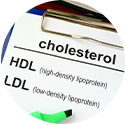Lyme disease, a debilitating bacterial infection that can have long-term repercussions, may be difficult to diagnose because of its tendency to mimic other illnesses.
It can also have widespread and seemingly unrelated symptoms, such as joint pain, constipation, stomach ulcers, headaches, brain fog and muscle aches. It can be especially devastating for someone with an already weakened immune system.
What is Lyme disease?
Lyme disease is a non-contagious bacterial disease caused by the Borrelia burgdorferi bacterium, which is transmitted through the bite of an infected blacklegged tick. The tick must be attached to the skin for 36-48 hours to transmit the disease, but once it does, the bacteria can affect the skin, joints, heart and nervous system. The Lyme pathogen is also able to hide from and suppress the immune system.
What are the symptoms of Lyme disease?
The first symptoms of Lyme disease may occur anywhere from a few days to months after being transmitted. A rash known as erythema migraines, often accompanied by flu-like symptoms, will often, but not always, appear surrounding the bite, starting as a red patch and expanding into a bullseye pattern. If it is left untreated, new symptoms will continue to occur, including:
- Pain and swelling in the joints, particularly the knees
- Heart problems, irregular heartbeat
- Neurological problems, meningitis, Bell’s palsy, numbness or weakness of the limbs, impaired muscle movement
- Inflammation of the eyes
- Hepatitis
- Fatigue
How is Lyme disease usually diagnosed?
The devastating effects of Lyme disease are frequently disregarded by mainstream practitioners because of its similarities to other conditions, something that can have serious consequences. If you think you may have Lyme disease, you should take the Horowitz Lyme-MSIDS Questionnaire which may give you an idea if your symptoms are likely to be those of Lyme. The earlier the infection is caught, the easier it is to treat.
The conventional way to test for Lyme disease is to measure specific antibodies in the blood. This method, however, misses up to 60 percent of Lyme disease cases in the early stage, as it can take weeks for a detectable amount of antibodies to develop. Traditional approaches often neglect the prevalence of tick-borne infections in the northeastern region of the United States and omit testing for these infections, unless someone has had a tick bite and spent a lot of time outdoors.
How they treat it
When someone is diagnosed with Lyme disease, they are usually treated with a short 1-7 day course of antibiotics, either orally or intravenously, depending on the severity of the case. While this may appear to be effective in the early stages of the disease, research now shows that four months after infection, Lyme bacteria can survive a 28-day course of antibiotics, invading vital organs such as the brain and heart.
How we treat it
At the Magaziner Center for Wellness, we use thorough bloodwork to enable us to diagnose Lyme disease as early as possible. While antibiotics may be necessary, full recovery calls for the kind of holistic approach we provide.
Because we recognize that Lyme disease suppresses the immune system and can affect the entire body, our toolkit includes immune support, diet, supplementation, and detoxification methods such as repairing leaky gut and activating T and B lymphocytes and natural-killer cells within the immune system. We also use oxygenation and oxidation to stimulate the body’s natural defenses to fight Lyme and related co-infections as well as various intravenous therapies to improve immune response.
learn more about iv therapies



































